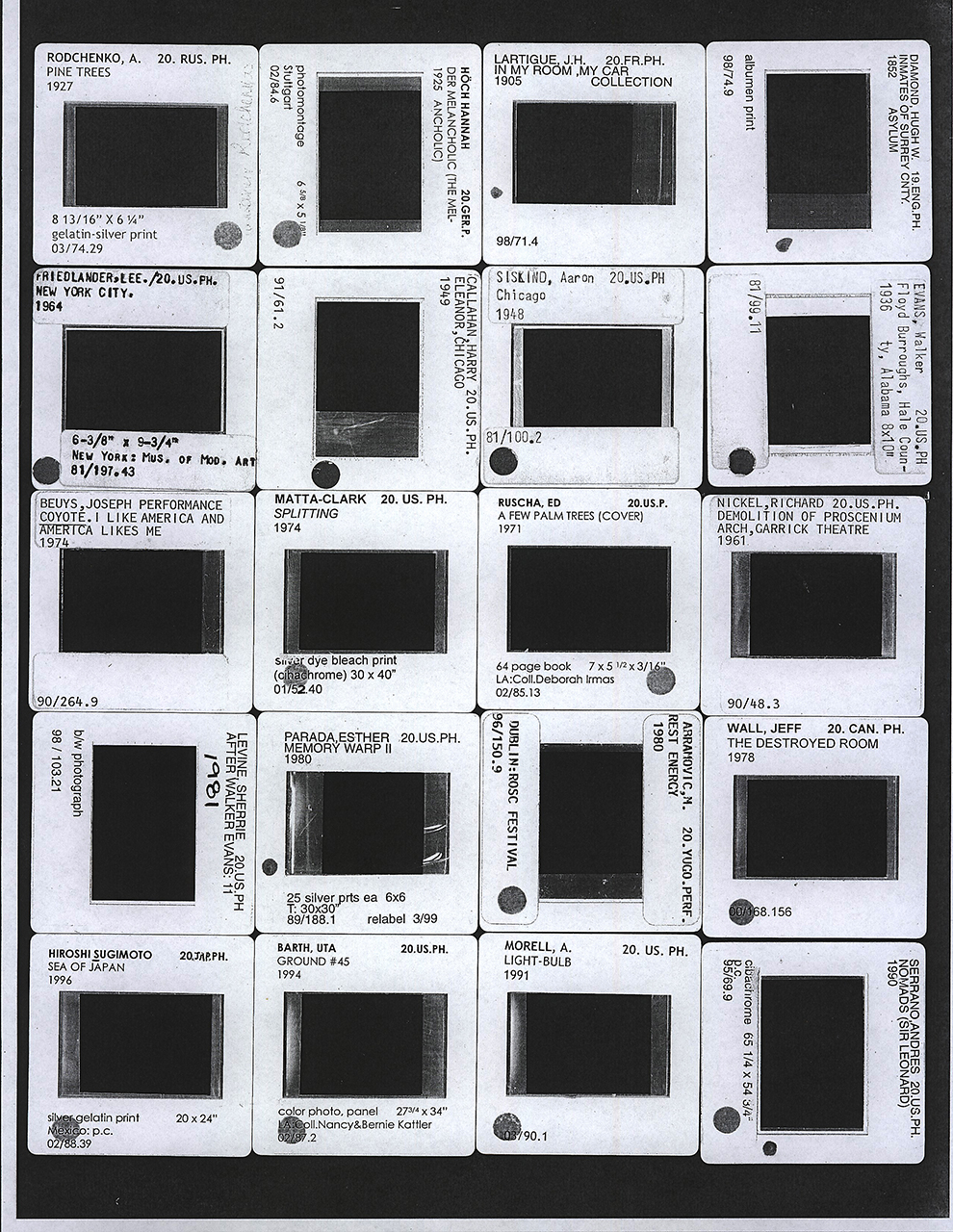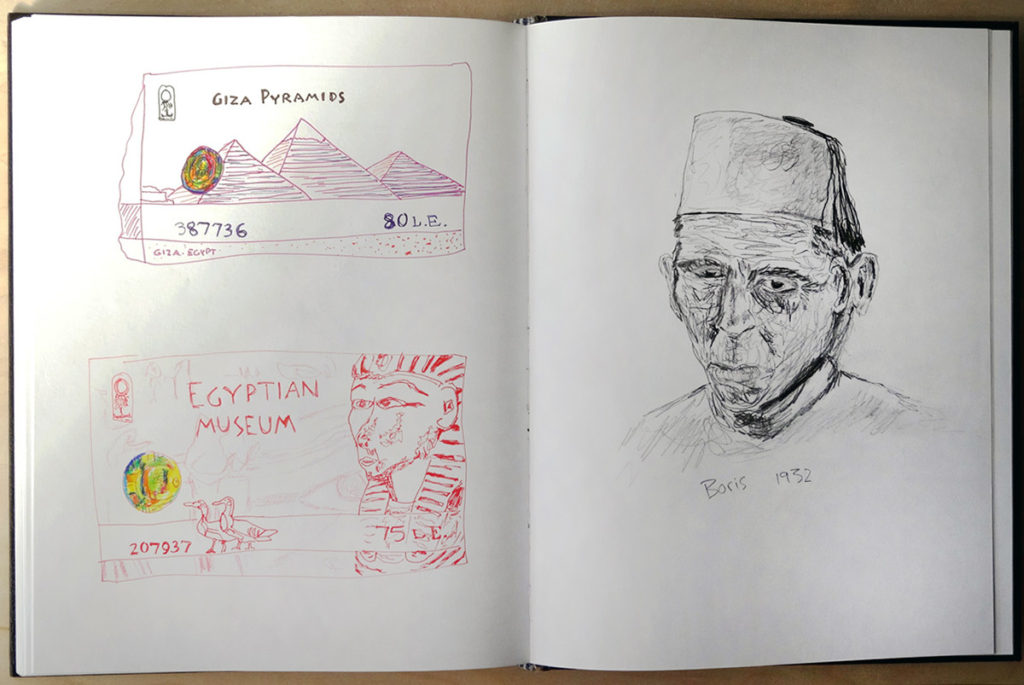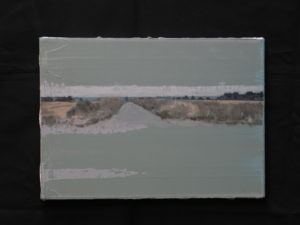1. Students should be accorded respect; teachers should earn it.
2. Rubbishing work brought to us in good faith, making people feel worthless, is not teaching; it is a form of abuse. Any dialogue about work starts from what the student has actually made, assumes it is made with the best of intentions, finds what is good in it and proceeds from there.
3. When we’re presented with a piece of work that seems banal, clichéd, badly executed, overly sentimental, gratuitously unpleasant, that makes our hackles rise, that seems like an affront to everything we value, it’s at that moment we should most entertain the possibility that we might be mistaken. This will be an occasion to identify some common first principles and to work slowly and carefully forwards from them.
4. If you’re wrong or you don’t know, bloody well say so.
5. No-one should propose to others a task that they are themselves not prepared to carry out immediately and publicly. Put less combatively – quiet co-working on a common task (either individual or collaborative) is a form of teaching. The more the lines between student and teacher are blurred, the better.
6. Any criteria based system of assessment of art is necessarily blind to what might make work great.
7. There are no general recipes for making art and there cannot be. Even given an identical departure point the same move will lead to triumph for one and a disaster for another. A practical suggestion can only ever be a prompt to thought.
8. We point to specifics to signal our sense that something is lacking. Often the actual problem will lie somewhere else entirely. This does not render our gesture useless.
9. Teaching art is like shouting from one vessel to another in the middle of a force ten gale.
10. There is no necessary connection between the ability to write or talk fluently about art and the ability to make it. This is not to say that ignorance is ever a virtue.
11. A familiarity with culture beyond the visual, some knowledge of history, geography, languages, some familiarity with the sciences, a keen interest in the world; whilst these are not essential, they’re helpful more often than not.
12. Work made under constraints of time, materials, theme, constitutes the artist’s five finger exercises. An artist is someone who, abandoned in a deep forest or on a desert isle, with only a pebble to mark with and a rock to mark upon will nevertheless make something of interest.
13. We teach and learn in the world we inherit and not the one we might want. We should encourage engagement from the beginning and no quarantine period is required or appropriate. Nonetheless, we should probably start in the shallow end.
14. We should actively consider the possibility that interpretive dance might be a better medium than words for the teaching of art.
15. Analogy, even entirely misplaced, is our friend.
16. A refusal to be easily satisfied, a restlessness, a feeling of only-as-good-as-one’s-latest-work, the capacity to work flat-out; also, the grace to accept gifts, to know when no further work is necessary or when to grit one’s teeth and continue – in short, a mature artistic conscience – cannot be imposed but developed only from within .
17. If art is a form of knowledge it is a very odd one.
18. Self-imposed, and/or market-imposed narrowness or homogeneity of output is, generally, not finding a voice but voluntarily relinquishing one.
19. The one thing you, and only you, can and have to know, or at least be prepared to bet on, is when and whether it’s any good. No-one else can tell you this (or even what ‘this’ means), though there are many siren voices in this matter.
20. Like it or not, parenting is quite a good analogy for teaching. Caring, nurturing, leading, learning when to look away, when not to intervene, handing over, letting go. Of course it’s not exact, but it indicates some responsibilities and trajectories.
21. Sometimes it is better to be sure one is uncertain than to be 99% certain one is right.
22. At its best the process affords us a peek (through a mirror, down the wrong end of a telescope) at a world where autonomous but deeply interdependent beings perform both aimless play and vital work but where, increasingly, as time passes, they can no longer tell which is which.
* * *
The other day at the institution where I teach studio practice we had an interesting and quite heated discussion about what the responsibilities of teachers are when they analyse, discuss or critique students’ work. It made me reflect on a number of assumptions that I realized I was making both practically and theoretically in my day to day teaching life. I’ve re-drafted this short document more times than just about anything else I’ve ever written, to try and get it to feel exactly right – clarifying those assumptions and scrutinising that practice. I’d be very happy if it could be a starting point for a wide ranging discussion by students, teachers, artists and anyone else with a view on both the practice and the ethics of what it means to teach art.
I welcome comments, replies, disagreement, refinements, amendments…whatever. I’ve deliberately not framed this discussion as “comments” (which are in fact disabled). To join in you simply register as a contributor here and write a post. Posts will appear in reverse of the normal blog order leaving my initial contribution as a reference point – although I have tried to say what I believe to be true I don’t regard it in any sense as a final word and I hope to have my assumptions challenged and expectations upturned in fruitful ways. Please do join in. It would be helpful if people could use real names and indicate some sort of self definition at the end thus:
Michael Szpakowski, artist & senior lecturer in art & design at Writtle School of Design, Essex, UK


